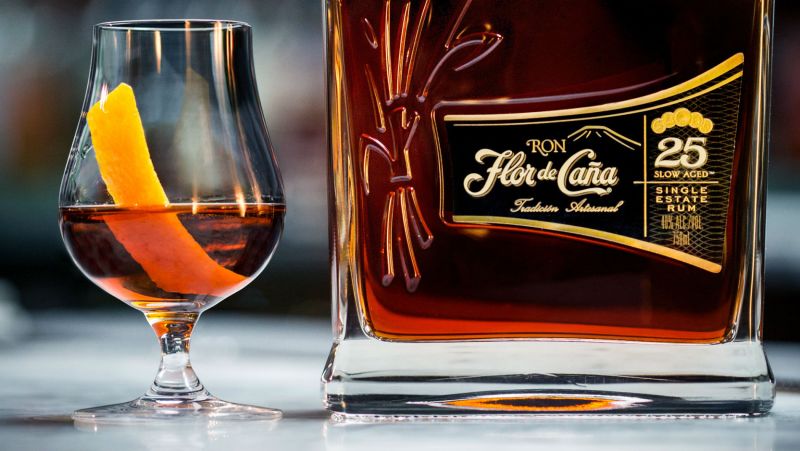
Rums, like whiskies, are aged in barrels for varying amounts of time, creating spirits that have similar colors and often similar palates. Obviously, the majority of the flavors will be different — rum being made from sugar by-products and whiskies from grains — but you will find similarities. If you’re a fan of the oak and vanilla notes that you get in a bourbon, you’re going to find those in an aged rum, too, since it has also spent time in a barrel (the barrel being responsible for the oak and vanilla notes more than anything else in the whiskey-making process). By necessity, the skill and craft needed to produce a fine whiskey is also evident in making an aged rum.
Basically, aged rum makes the perfect follow-up to whiskey when you’re looking for something complementary, but still want to explore.

One of our favorites in the aged rum category (a category which is growing by the day and becoming an ever-more-expensive habit) is the 25-year-old expression from Flor de Caña.
Flor de Caña is a Nicaraguan company that has been in production for 125 years (and owned by the same family for five generations), producing rums that range from the Ultra Lite 4-year-old expression all the way up to what we just mentioned, their Flor de Caña 25 Years.
The rum, once distilled, is aged in American white oak barrels that are sealed with plantain leaves. Because of the temperature and climate of Nicaragua (and the fact that the distillery sits at the base of the most active volcano in the country, San Cristóbal), the rums are “slow-aged.” While the process takes little longer, the flavors that come out are well beyond their years, and also free of other ingredients like accelerants or additional sugar. The 25-year mark, according to global brand ambassador Mauricio Solórzano, is the perfect age for the rum — it brings out the best flavors without getting too much from the wood, which could ruin the product by making it become too tannic, etc.

Dark amber in color, this rum will immediately bring to mind fine aged whiskies with its vanilla and oak nose. On the palate, though, you begin to realize that you’re not in whiskey-land anymore. Fruity notes blend with nutty flavors and a dry caramel wave that lesser rums can only dream of. There is a sweetness, but it is not cloying.
We’re not the only ones to love this rum, either. It is a multi-award-winning liquor; most recently, it took the 2017 Best Rum of the Year at the International Rum Conference in Madrid.
So, what are you waiting for? This fall, when you’re looking for something to warm up your insides, why not reach for an aged rum this time around?
Editors' Recommendations
- Love albondigas soup? Our albondigas recipe is a fall and winter favorite, and we think you’ll agree



